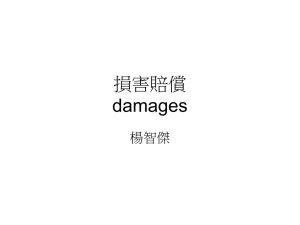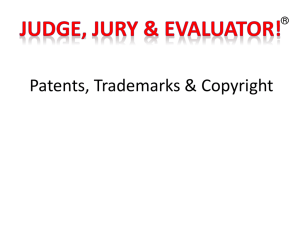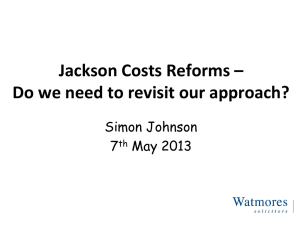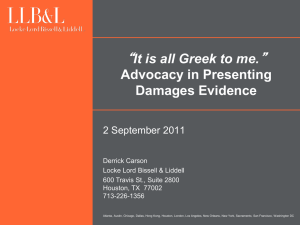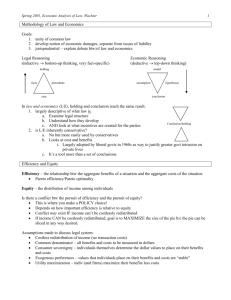Midterm 1 Study Guide
advertisement
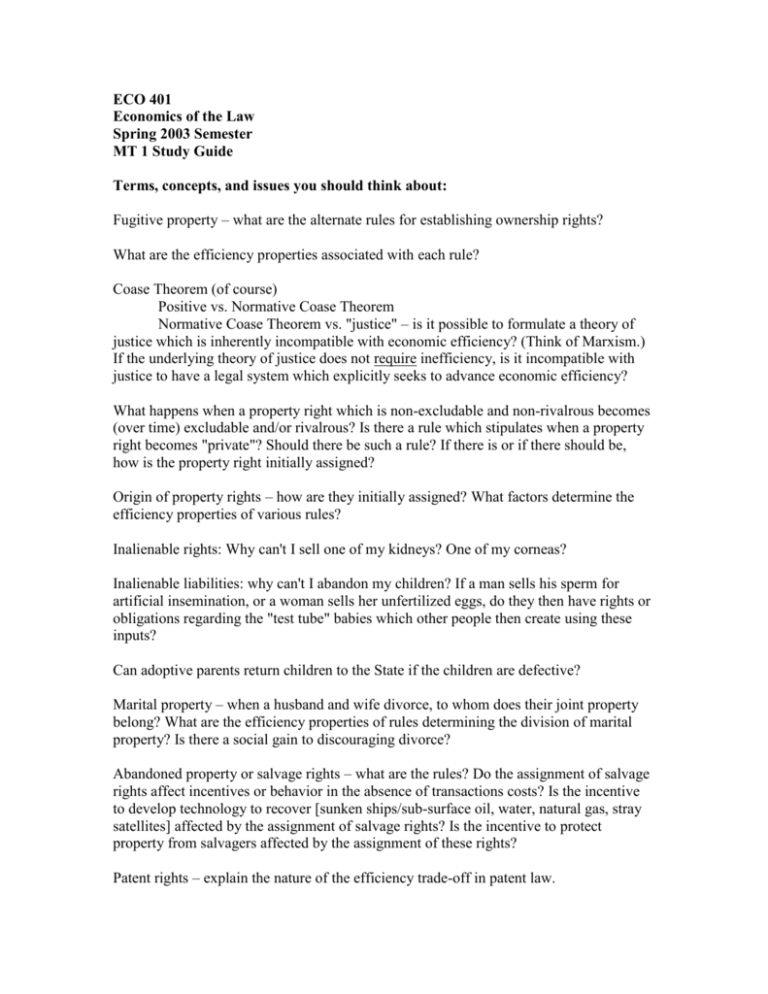
ECO 401 Economics of the Law Spring 2003 Semester MT 1 Study Guide Terms, concepts, and issues you should think about: Fugitive property – what are the alternate rules for establishing ownership rights? What are the efficiency properties associated with each rule? Coase Theorem (of course) Positive vs. Normative Coase Theorem Normative Coase Theorem vs. "justice" – is it possible to formulate a theory of justice which is inherently incompatible with economic efficiency? (Think of Marxism.) If the underlying theory of justice does not require inefficiency, is it incompatible with justice to have a legal system which explicitly seeks to advance economic efficiency? What happens when a property right which is non-excludable and non-rivalrous becomes (over time) excludable and/or rivalrous? Is there a rule which stipulates when a property right becomes "private"? Should there be such a rule? If there is or if there should be, how is the property right initially assigned? Origin of property rights – how are they initially assigned? What factors determine the efficiency properties of various rules? Inalienable rights: Why can't I sell one of my kidneys? One of my corneas? Inalienable liabilities: why can't I abandon my children? If a man sells his sperm for artificial insemination, or a woman sells her unfertilized eggs, do they then have rights or obligations regarding the "test tube" babies which other people then create using these inputs? Can adoptive parents return children to the State if the children are defective? Marital property – when a husband and wife divorce, to whom does their joint property belong? What are the efficiency properties of rules determining the division of marital property? Is there a social gain to discouraging divorce? Abandoned property or salvage rights – what are the rules? Do the assignment of salvage rights affect incentives or behavior in the absence of transactions costs? Is the incentive to develop technology to recover [sunken ships/sub-surface oil, water, natural gas, stray satellites] affected by the assignment of salvage rights? Is the incentive to protect property from salvagers affected by the assignment of these rights? Patent rights – explain the nature of the efficiency trade-off in patent law. Copyrights – are copyrights any different from patents? If so, why? Trademarks – in what way(s) are they different from patents and copyrights? Why is an injunction a better (more efficient) rule for resolving property disputes than damages? Are there exceptions? What is the difference between temporary injunctions and permanent injunctions? When should courts apply the latter if the goal is to promote economic efficiency? (See Boomer vs. Atlantic Cement.) Why did the parties NOT settle out of court, given that the property owners were being damaged by the operation of the cement plant, and the assignment of rights was reasonably clear. Was that related to the decision to grant permanent damages? Are permanent damages economically efficient? (Assuming that the court can correctly assess the magnitude of such damages. A real problem: Suppose a firm has a short-run marginal cost curve of MC = (1/2)·Q where Q is the rate of output. It faces a demand for its product of Qd = 40 – P. What is the firm's profit maximizing output? What is the price? Suppose the firm's production imposes a cost on nearby property owners, so the MC above does not capture the entire social cost. The harm done to others is EC = (1/4)·Q. If the firm were operating at a rate which would set price equal to marginal social cost, what would the firm's output be? If a court imposes an injunction and imposes temporary damages on the firm after it has operated at the level which ignores the external cost (EC) above, how much would the temporary damages be? Suppose the relevant real interest rate facing the firm is 5%, and assume the plant will operate forever with the demand and cost functions above. What is the amount of cash that the firm must pay to the property owners to compensate them permanently for the damage done by the plant? Does the firm – after paying these permanent damages – have any incentive to mitigate the damage done by its production? What is the maximum amount of cash that the firm might be willing to pay in order to obtain a permanent license to impose the harm on the property owners? What is the incentive faced by the plant owner to invest in improvements in abatement technology? (Think about the incentive both with and without permanent damages paid.) Suppose the property owners can mitigate their own damages at a marginal mitigation cost of (1/8)·Q. a. What is their incentive to adopt damage mitigation with temporary damages + injunction? b. What is their incentive to adopt damage mitigation with permanent damages? Suppose the firm has paid permanent damages. Then a new abatement technology is invented which can lower the external cost, but by increasing the firm's marginal cost. a. Will the plant which has paid permanent damages adopt this technology? b. Will a new entrant to the industry (not having paid any damages to anybody) adopt this technology? c. If some firms in the industry adopt the technology and others do not, think about the competitive situation between firms in the industry. Does permanent damages provide efficient incentives to adopt abatement technologies?




